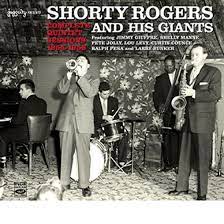
Daily Dose Of Jazz…
Lawrence Benjamin Bunker was born November 4, 1928 in Long Beach, California. At first he played primarily drums, but increasingly he focused on vibraphone. He was later highly regarded for his playing of timpani and various percussion instruments.
Bunker is a dependable and in-demand studio drummer and vibist who achieved distinction recording with Billie Holiday, Ella Fitzgerald, Peggy Lee, Diana Krall, and many other jazz greats. In 1952, he was the drummer in one of Art Pepper’s first groups. The next two years he played drums in some of the earliest of Gerry Mulligan’s groups.
In the 1950s and 1960s he appeared at Howard Rumsey’s Lighthouse in Hermosa Beach, and performed with Shorty Rogers and His Giants and others. The Sixties had him intermittently drumming in the Bill Evans trio and played timpani with the Los Angeles Philharmonic orchestra.
His work in movie soundtracks spanned over fifty years, from Stalag 17 in 1953 and Glengarry Glen Ross in ‘92) to The Incredibles in 2004. Larry’s work included soundtracks by John Williams, Henry Mancini, Quincy Jones, Miklós Rózsa, Jerry Goldsmith, Johnny Mandel, Lalo Schifrin and many other composers.
Drummer, vibraphonist, and percussionist Larry Bunker, who was a central figure on the West Coast jazz scene, transitioned from complications of a stroke in Los Angeles, California at age 76 on March 8, 2005.
More Posts: bandleader,drums,history,instrumental,jazz,music,percussion,timpani,vibraphone
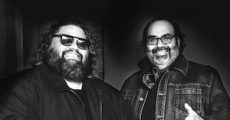
NEGRONI’S TRIO
The Aventura Jazz Festival presented by Lion Tribe Group presents three-time Latin GRAMMY®-nominated group Negroni’s Trio as part of a two day celebration of outstanding music performances. The Jazz takes place in Aventura!
Negroni’s Trio possesses enough musical experience to captivate listeners of any musical genre and is seducing and entertaining audiences across all continents. Negroni’s Trio is comprised of a “father and son team”, José Negroni, on piano and keyboards, Nomar Negroni, on drums and percussions, completing the trio is bassist Rafael Valencia. The Negroni team have worked together since 2002 as Co-Founders and Co-Producers to form an ensemble of master musicians who create their own unique voice in traditionally known jazz classics, Latin jazz and jazz fusion. Taking musical risks with performance and repertoire, the result is an array of classic lyricism mixed with innovative and sincere improvisations that quenches the audience’s thirst for world class jazz.
More Posts: adventure,album,club,drums,festival,genius,jazz,museum,music,percussion,piano,preserving,restaurant,travel
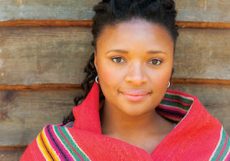
LIZZ WRIGHT
A steward of American music, acclaimed vocalist Lizz Wright is rising out of the pandemic and returning to stages across the globe. She has reclaimed her legacy with the launch of an independent record company, Blues & Greens Records. Wright’s label launched with the June 15, 2022 release of Holding Space, a brilliant live album capturing a Berlin, Germany concert where Wright and her band closed out their 2018 European summer tour.
More Posts: adventure,album,club,genius,jazz,museum,music,percussion,preserving,restaurant,travel,vocal
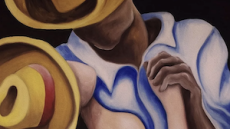
CON TUMBAO: ALL~STAR CELEBRATION OF LATIN RHYTHMS
Con Tumbao celebrates the common ingredient in Latin music that urges hips to sway. This is music of the people. In his new project, Con Tumbao, Cuban singer-songwriter Issac Delgado brings together an extraordinary band playing a repertory that speaks a familiar language in many accents.
More Posts: adventure,album,club,genius,jazz,museum,music,percussion,preserving,restaurant,travel,vocal
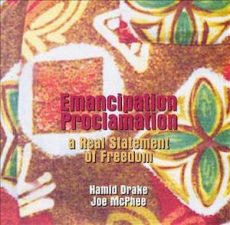
Daily Dose Of Jazz…
Hamid Drake was born Henry Lawrence Drake on August 3, 1955 in Monroe, Louisiana but his family moved to Evanston, Illinois, when he was a child. There he started playing with local rock and R&B bands, which eventually brought him to the attention of Fred Anderson, an older saxophonist who had also moved to Evanston from Monroe as a child decades before. Drake worked with Anderson from 1974 to 2010 including on his 1979 The Missing Link.
At Anderson’s workshops, he met Douglas Ewart, George E. Lewis and other members of Chicago’s Association for the Advancement of Creative Musicians (AACM). Percussionist Ed Blackwell had a great influence on Drake, during this period. His flowing rhythmic expressions and interest in the roots of the music drew like-minded musicians together into a performance and educational collective named the Mandingo Griot Society, which combined traditional African music and narrative with distinctly American influences.
During the Seventies he met Don Cherry and with Adam Rudolph toured Europe and worked extensively with him from 1978 until Cherry’s death in 1995. It was during this period where they explored the interior landscape of percussion and shared deeply in Mr. Cherry’s grasp of music’s spiritually infinite transformational possibilities.
By the close of the 1990s, Hamid was widely regarded as one of the best percussionists in jazz and improvised music. Incorporating Afro-Cuban, Indian, and African percussion instruments and influence, in addition to using the standard trap set, Drake has collaborated extensively with top free jazz improvisers, performed world music and reggae during his career.
Drummer and percussionist Hamid Drake, who also plays the tabla, continues to perform.
More Posts: bandleader,drums,history,instrumental,jazz,music,percussion,tabla



